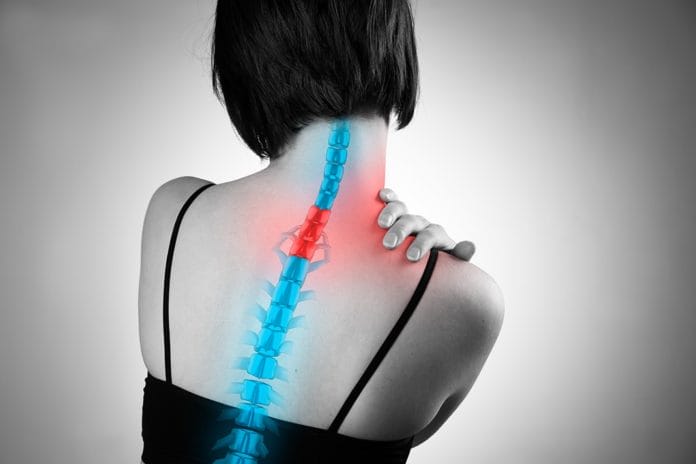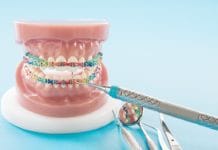We all know that dental hygiene students face a multitude of pressures while in school. Hours upon hours of clinic and classes, focusing on perfecting instrumentation skills, worrying about finding the right board patient – the pressures are endless! There is no wonder that focusing on ergonomics may fall by the wayside, especially when you are trying to accomplish thorough calculus removal on a difficult patient, you might as well bend and twist any which way to get through the appointment and ace the clinical instructor’s evaluation – who wouldn’t?
However, proper ergonomics should be highly important to students as a recent longitudinal study of dental hygiene students found that students are already reporting symptoms of musculoskeletal disorders (MSD’s) before they even graduate.1 In addition, the dental hygiene profession also took the #1 spot among professions which are dangerous to your well-being in a recent article2 – all the more reason to practice proper ergonomics!
Although proper patient/clinician positioning and ergonomics were taught while I was in school in the early 1990’s, ergonomics was not a hot topic at that point. Only the attending dentist wore loupes, all of the operator stools were the same design (one size fits all), and you were expected to sit with thighs parallel to the floor – an impossible feat depending on your body type! What I often found myself doing was sitting with my legs crossed leaning toward the patient, never using the backrest of the chair, or having one foot up on the casters of the chair. Although ergonomics was discussed in school, I don’t recall it being enforced when we actually started seeing patients.
Fast forward five years after graduation and I’m sure you can guess at this point what happened to me – a musculoskeletal disorder (MSD). An MSD is defined as damage to body tissue (hard or soft) that can build up over time (as mine did) or be caused by a single incident.1 The toll of working full-time hygiene, coupled with disregarding ergonomics and power scaling, had crept up on me. My entire right arm and shoulder were hurting so much! I ignored the pain for a while, favoring my left arm for tasks as I was unable to lift much weight, trying not to use my right arm except while working. As you can imagine, this was not feasible long-term. I was too scared to tell anyone and was worried about my future in dental hygiene, as well as my economic livelihood. Yet, this episode was not enough to get me to change my reliance on hand scaling and less than stellar ergonomics.
Fortunately, physical therapy combined with increasing my use of power scaling improved my situation. A short time after this episode I moved to another state, started working part-time, and lucky for me, the MSD quieted down. Unfortunately, this would not be the end of my struggle.
Another three years went by, and my husband’s career transferred us to another state. I eventually started practicing in an office with a large percentage of periodontal patients working 32 hours a week. Slowly the MSD surfaced once more, and this time I was at the chiropractor every week seeking relief. My work environment had less than optimal lighting, and I sat on a rickety operator stool. Every time I reached for the overhead light, there would be a cracking noise in my shoulder. In addition, I had the poor habit of lifting my elbow high, as I sat at the 8 o’clock position, scaling the lower anterior teeth. The dental chair design paired with the rickety stool made it difficult to get close enough to my patient. Sometimes I would even catch myself with my left foot up on the caster of the operator stool, leaning over, with my left elbow resting on my leg, while my right arm was up at an odd angle scaling. When I look back, I can’t believe I worked like this! No wonder I needed the chiropractor every week!
Although I had always been an avid consumer of dental journals and realized that dental hygiene leaders were increasingly encouraging hygienists to take charge of their health by taking steps to purchase their own ergonomic chairs and loupes with light, I did not heed the advice and continued practicing this way – in pain.
One day our doctor decided it was time for new operator stools and our local sales rep brought in a few different stools to try. This was when I was introduced to the saddle chair – which changed my life. I was able to get so much closer to the patient, which decreased my odd habit of lifting my arm high while scaling. Since you have to keep both feet on the floor with a saddle chair (or you will start to fall off), I could no longer cross my legs or put my foot up on the casters. I was forced to sit properly!
I ended up working at that office for two more years and purchasing the saddle chair myself as I was the only one in the office who preferred it. Since then, I was fortunate enough to win another saddle chair at a CE event. Having two chairs have been ideal for me, as my work in public health brings me to multiple locations. I am able to leave one saddle in our public health clinic and tote the other with me off site when I provide services to children in schools and on our mobile unit. Adding loupes and light after 17 years in practice was also a great ergonomic decision, as I no longer have to fiddle with the overhead light, taking great stress off of my chronically stressed shoulder.
My hope by sharing my story is to persuade all hygienists who may be quick to dismiss their ergonomics to think twice. Your body will only be able to shoulder the burden (pun intended) of poor positioning for so long and then rebel as mine did. Purchase the chair that fits your body and don’t be shy about toting it around with you if you practice in more than one location.
Purchase loupes and a light so you are not reaching overhead to adjust the light multiple times in a day and creating a problem with your shoulder. By wearing loupes with a light, you not only are more likely to decrease your risk for an MSD3, but you will also find you are more efficient in your treatment. Although cost may seem like a barrier, you only have to look at all the time and finances I depleted going to the chiropractor and physical therapist to realize the purchase is worth it. Some companies even offer interest-free payment plans.
Although I am grateful to now be practicing pain-free, in hindsight, I wish I had taken the initiative much sooner. Don’t let this happen to you! To the next generation of hygienists who are on the fence about purchasing their own equipment – please don’t wait to take care of yourselves – your career and your well-being are depending on you!
Before you leave, check out the Today’s RDH self-study CE courses. All courses are peer-reviewed and non-sponsored to focus solely on high-quality education. Click here now.
Listen to the Today’s RDH Dental Hygiene Podcast Below:
SEE ALSO: Ergonomics: If I’d Only Known
DON’T MISS: Dentistry is a Real Pain in the Neck
References
- Hayes, M.J., Smith, D.R., Taylor, J.A. (2014). Musculoskeletal Disorders in a 3 Year Longitudinal Cohort of Dental Hygiene Students. Journal of Dental Hygiene, 88(1): 36-41. Retrieved from http://jdh.adha.org/content/88/1/36
- Kiersz, A., Gillett, R. (8 May 2018). The 47 jobs that are most damaging to your health. Business Insider. Retrieved from https://www.businessinsider.com/most-unhealthy-jobs-in-america-2017-4#1-dental-hygienist-47
- Hayes, M. J., Osmotherly P.G., Taylor J.A., Smith D.R., Ho, A. (2014). The effect of wearing loupes on upper extremity musculoskeletal disorders among dental hygienists. Int J Dent Hygiene, 12: 174–179. DOI: 10.1111/idh.12048 Retrieved from https://www.researchgate.net/profile/Melanie_Hayes/publication/253332817_The_effect_of_wearing_loupes_on_upper_extremity_musculoskeletal_disorders_among_dental_hygienists/links/5696bf4f08aec79ee32a10a3.pdf
















